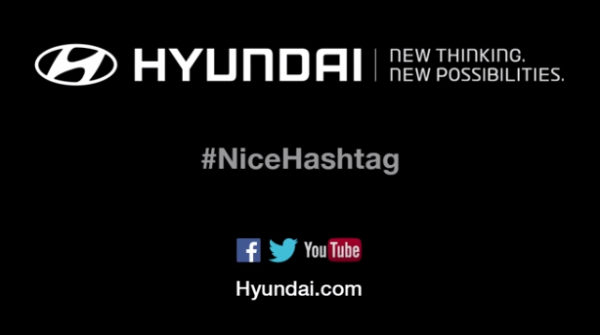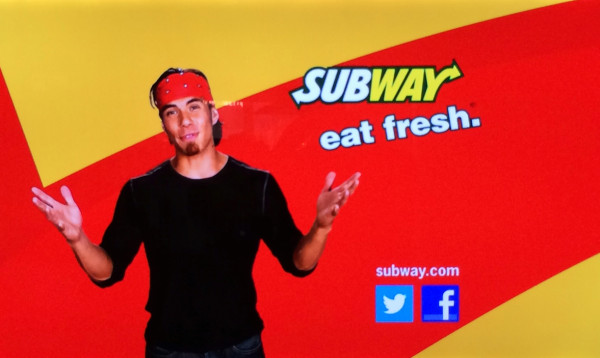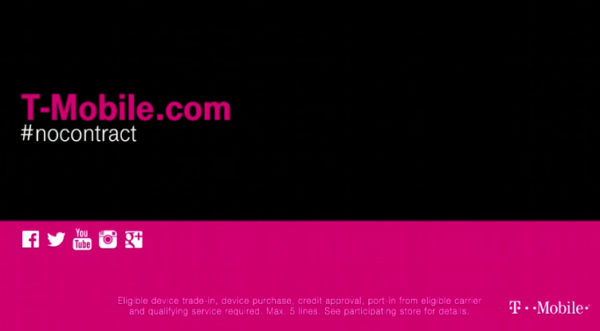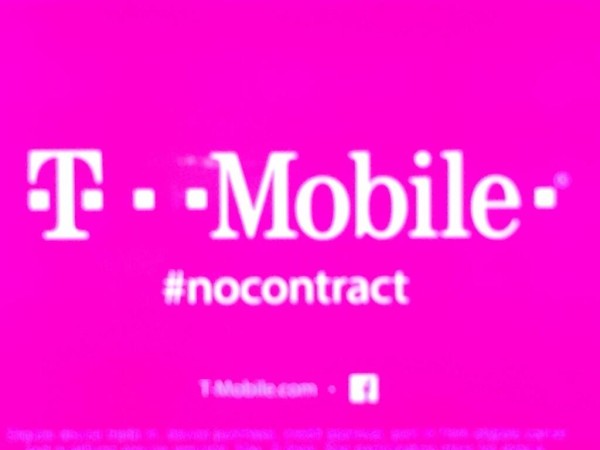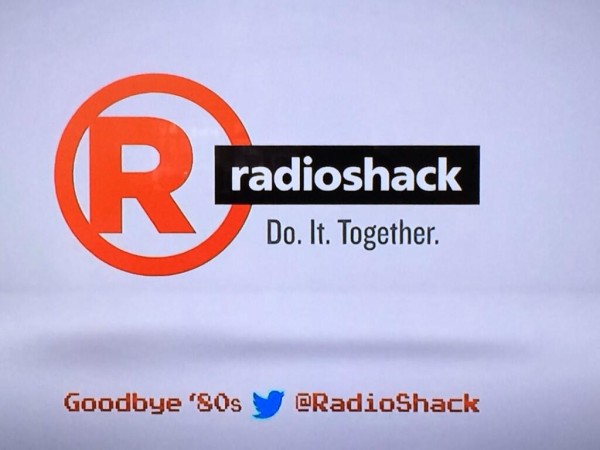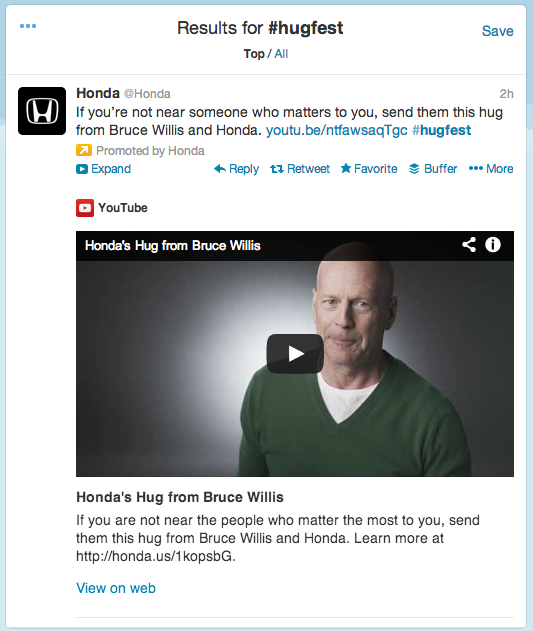New Record For 2014: Hashtags Mentioned In 57% Of Super Bowl Ads
Hashtags were used in 57 percent of nationally-run Super Bowl ads, up from 50% in 2013 and setting a new record. Facebook was the social network most mentioned, though barely. It had only five mentions and just edged past Twitter with four. The numbers are from our third annual #Hashtag Bowl count of social media […]
Hashtags were used in 57 percent of nationally-run Super Bowl ads, up from 50% in 2013 and setting a new record. Facebook was the social network most mentioned, though barely. It had only five mentions and just edged past Twitter with four.
The numbers are from our third annual #Hashtag Bowl count of social media mentions during the Super Bowl. We only counted ads shown nationally, and only ads from after the kick-off until the game was over. Promos for Fox, the network that carried the Super Bowl, were not included. Nor was the Pepsi lead-in to the half-time show.
In change from last year, a hashtag also no longer counted the same as a Twitter mention. All the major social networks now support hashtags, including Facebook. However, it still seems likely that hashtag use was especially designed to drive real-time discussion on Twitter. We’ll have a follow-up article to look more closely at this, as well as social media highlights.
The Count
Our scoreboard at the top of this article has the final count, but here’s the summary with percentages, based on a total of 54 national ads reviewed:
- Hashtags: 31 total, 57% of ads overall
- Facebook: 5 total, 9% of ads overall
- Twitter: 4 total, 7% of ads overall
- YouTube: 3 total, 6% of ads overall
- Shazam: 2 total, 4% of ads overall
- URLs: 22 total, 41% of ads overall
(NOTE: An earlier version of this story missed the Transformers national ad, which had no mentions of any type. That changed the percentages as follows: Hashtags from 58% to 57%; Twitter from 8% to 7%; URLs to 41%; others unchanged.)
Once again, Google+ was completely shut-out. Instagram, which got a mention last year, got none this year. Shazam was a surprise, picking up two ads encouraging people to use the audio service. YouTube also scored two mentions.
Hyundai Wins For Most-Inclusive Of Social Networks
Only Hyundai seemed to fear leaving anyone out. The company ran two ads. Both carried logos for Facebook, Twitter and YouTube, along with a Hyundai URL. One of them also had a hashtag:
Subway was the runner-up for inclusivity, carrying logos for Twitter and Facebook, along with its URL:
T-Mobile Loves Facebook
Facebook owes its one mention edge over Twitter to T-Mobile. For its online Super Bowl ads, T-Mobile used logos for Facebook, Twitter, YouTube, Instagram and Google+, as you can see below
But for the game itself, T-Mobile chose to drop everyone but Facebook (sorry for the fuzzy picture), while also running its own URL and a hashtag:
RadioShack Loves Twitter
If T-Mobile had some unusual love for Facebook, RadioShack decided it was all about Twitter, using Twitter’s logo and RadioShack’s Twitter account name even over a hashtag or RadioShack’s own URL:
Let’s Hear It For The URL
While so much focus is on hashtags and social media mentions, let’s not forget the lowly URL. Actually, lowly isn’t the right word at all. URLs are the permanent home for any brand on the web, and that value seemed recognized by many of those advertising. Our count had 41% of ads carrying a URL, the most commonly used call-to-action after hashtags.
Running Order Of Ads
Here’s the running order of commercials counted. For each commercial, if there was a hashtag, this is shown. If there was any type of social media or other mention, that’s also listed. Ads that carried URLs to their own sites are also noted:
- Bud Light: #UpForWhatever
- Maserati
- Doritos: #Doritos
- Chevy: #SilveradoStrong
- Need For Speed: #NFSMovie (and YouTube URL)
- TurboTax
- Bud Light: #UpForWhatever (Shazam)
- Beats (URL, iTunes, Google Play, Windows Phone)
- Red: #Connect4Red
- Hyundai (Twitter, Facebook, YouTube & URL)
- Cheerios
- Squarespace
- RadioShack (Twitter)
- Chevy (URL)
- GoDaddy: #LiveYourDream (and URL)
- Bud Light (URL & Shazam)
- TMobile: #nocontract (and Facebook, URL)
- WeatherTech (URL)
- Transformers
- VW: #VW
- Wonderful Pistachios (URL)
- H&M: #BeckhamforHM (and URL)
- The Amazing Spider-Man 2: #SpiderMan (and URL)
- CarMax: #slowclap #slowbark
- Geico
- M&M
- Coca-Cola: #AmericaIsBeautiful
- Sonos: #sonos
- Toyota (URL)
- Subway (URL, Twitter & Facebook)
- Jeep: #stayrestless (and URL)
- Crackle/Seinfeld (URL)
- Audi: #StayUncompromised
- Intuit/GoldieBlox: #TeamSmallBiz
- TMobile: #nocontract (and Facebook, URL)
- Axe: #KissForPeace
- Chobani: #HowMatters
- Kia (URL)
- Sprint: #framily (and URL)
- Heinz: #ifyourehappy
- Honda: #hugfest
- Budweiser: #salute
- Chrysler: #AmericansImport (and URL)
- Coca-Cola: #AmericaIsBeautiful
- Butterfinger: #cuptherapy
- Microsoft: #empowering (and URL)
- Hyundai: #NiceHashtag (and Twitter, Facebook, YouTube & URL)
- Jaguar: #GoodToBeBad (and URL, Shazam)
- Dannon
- T-Mobile (URL)
- SodaStream
- Budweiser: #BestBuds
- GoDaddy: #ItsGoTime
- Doritos: #Doritos
Who Won The Super Bowl? Stay Tuned
Now that you’ve seen the count of hashtag use and other mentions, you’re likely wondering who won in terms of brands. Well, stay tuned. Determining who won is complicated, but we’ll be working on that in our follow-up coverage here on Marketing Land.
For example, a sign of failure could be if searching for a hashtag doesn’t bring up an ad from a particular brand. Take both Butterfinger and Honda. A search on Twitter for the hashtags they put out brings up results topped by their own promoted tweets:
In contrast, Audi doesn’t appear to be doing promoted tweets for its own hashtag. Or if it is, I didn’t get an Audi ad when I checked. Instead, I got one from Lincoln, which may be targeting Audi’s hashtag and trying to hijack some of the interest that generated for itself:
It could also be some weirdness in terms of how Twitter does ad targeting, too. That’s what I mean about figuring out success being complicated.
Crucially, what happens when people turn to Google to search not for hashtags but for some of these brands is often a point of failure, as we see year-after-year. We’ll be looking at that again soon, along with other metrics of success or failure, such as which ads spiked in viewership online and which hashtags seemed to generate buzz.
Our post-game analysis is coming, so be sure to tune back in! An easy way to keep up is to visit our special #Hashtag Bowl page, where any of our future coverage will appear.
Contributing authors are invited to create content for MarTech and are chosen for their expertise and contribution to the martech community. Our contributors work under the oversight of the editorial staff and contributions are checked for quality and relevance to our readers. The opinions they express are their own.
Related stories

